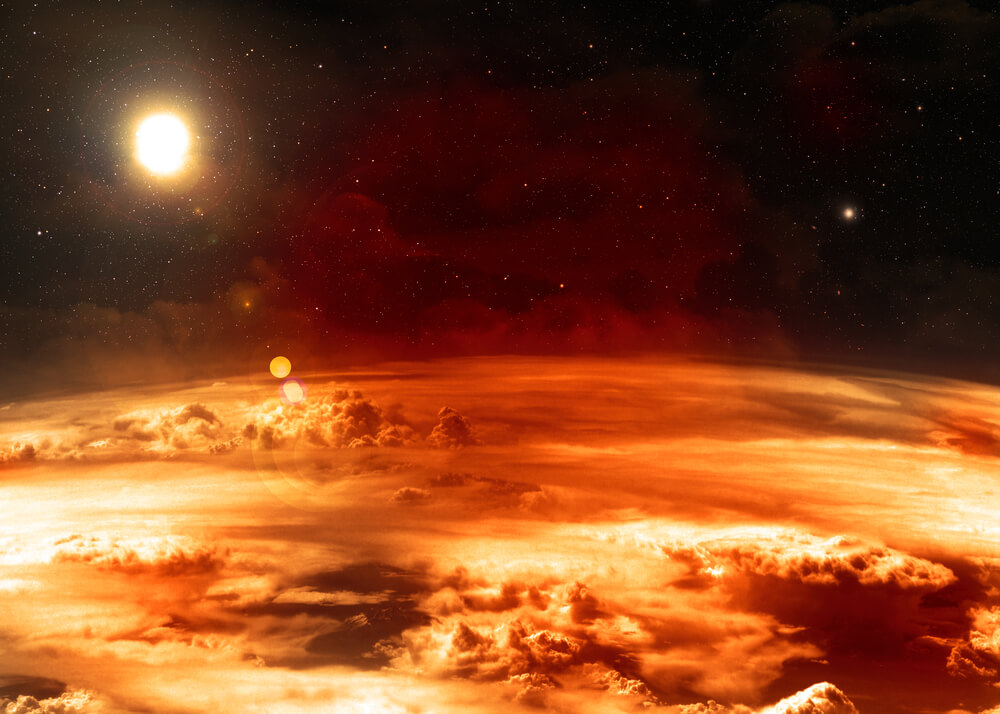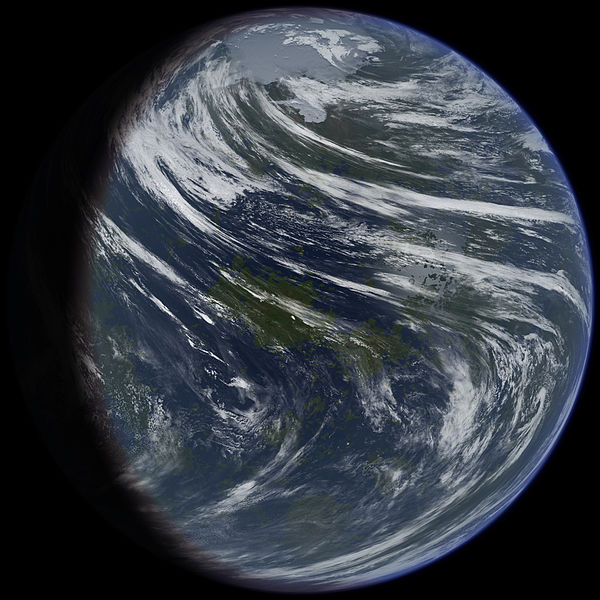For centuries, people have been fascinated by Venus—one of the brightest objects in the night and morning skies. For
Until the 1960s, science assumed thatLife and even civilization may exist on Venus. Everything changed when earthlings sent the first probes to it to collect information about the atmosphere and surface of the planet (as part of the NASA Mariner and Venus programs from the USSR). Thanks to these missions, people learned the terrible truth about our neighbor.
What's wrong with Venus?
Venus is the hottest planetin the solar system, its surface temperature is about 464 °C. By the way, under such conditions you can melt lead. The pressure on Venus is 92 times greater than on Earth. The atmosphere is so dense that it can crush a person and is 96.5% carbon dioxide. Is this not enough? It rains sulfuric acid on Venus.

And yet, there are several factors thatmake it attractive as a new home for humanity. Compared to other planets, the force of gravity on the surface of Venus hardly differs from that to which we are accustomed and is only 8.87 m / s². This means that on the planet a person will be only 10% lighter (1 kg on Earth corresponds to 850 g on a neighboring planet). This means that the colonizers of Venus are not afraid of muscle atrophy, loss of bone density and decreased organ function - the usual consequences of microgravity.
Where can you live on Venus?
The very dense nature of Venus's atmosphere createsunique opportunities for the living environment. The pressure at an altitude of just over 50 km above the surface is about 100 kPa (at the Earth at sea level - 101.325 kPa), and the temperature is only 30 ° C. The dense atmosphere can also protect colonizers from cosmic radiation. All this has led to the fact that, since the 1970s, scientists have been proposing settlement projects in the clouds of Venus.

In 2003, NASA scientist Jeffrey A.Landis breathed new life into this idea in the article "The Colonization of Venus." He argued that if they built soaring cities in the atmosphere at an altitude of 50 km above the surface of Venus, they would be protected from the harsh conditions of the planet.
The atmosphere of Venus is the most terrestrial environment (exceptour planet) in the solar system. In the near future, people will explore it with balloons in the atmosphere. In the long term, we can build permanent settlements there. They will hover in the atmosphere of Venus at a distance of about 50 km from the surface.
Jeffrey A. Landis
According to Landis's proposal, balloons would be able tofloat in the atmosphere of Venus and will be filled with breathable air (a mixture of nitrogen and oxygen in a ratio of 78: 22). In 2015, employees of the Office of Conceptual Projects and Systems Analysis (SACD) from NASA Langley Research Center presented the HAVOC - High project Altitude Venus Operational Concept.
According to the plan, scientists will first conductrobotic research, then - will launch an orbital manned mission that will last 30 days. Then it will be the turn for the same mission, but in the atmosphere of Venus, which will also last a month. Next, the most important stage is a manned mission in the atmosphere, which will last for a year. Then you can build a permanent settlement in the clouds. But scientists are not going to stop there and are thinking about how to terraform Venus.
How to turn Venus into Earth?
There are many ways to terraform Venus -change her environment to be more like Earth. To do this, you need to cool the planet's atmosphere, and then make it similar to Earth, so that it consists of nitrogen and oxygen. Another important step is to influence the rotation of the planet so that a day there lasts 24 hours. And, of course, don't forget about water.
How realistic is this?Each of these steps complements the others in one way or another. Because Venus absorbs twice as much sunlight as Earth, radiation is thought to have played a major role in the greenhouse effect that makes Venus so harsh. Scientists propose to limit the amount of sunlight by placing special screens between the Sun and Venus at the Lagrange point.

Venus also needs water, but to createAn acceptable hydrosphere on Venus requires at least one hundred million billion tons of water (10 to the 17th power) - this is 100 thousand times more than the mass of Halley's comet. Why is it important? Water can be delivered to Venus by bombarding it with comets or water-ammonia asteroids. Some moons of Jupiter and Saturn also contain large amounts of water. In 2015, scientists found that water reserves on the Moon arose precisely thanks to “supplies” from asteroids.
There is also a theory that an accurately calculatedthe bombardment will "spin" Venus around its axis, thus reducing the Venusian day's too long (now they are 116 days 18 hours). According to the law of conservation of angular momentum, regardless of the details, in the event of a tangential impact at the equator, the planet's rotation speed will increase. In addition, since Venus is a terrestrial planet, it is hoped that a magnetic dynamo will appear as a result of the impact. Scientists believe Venus has mechanisms similar to Earth's plate tectonics, hence it also has a metal core.
 Hypothetical planet Venus after terraforming
Hypothetical planet Venus after terraforming
Asteroid bombing and the magnetic fieldwill help create and preserve a new atmosphere that will not be carried away by the solar wind. The necessary elements can be delivered by meteorites, for example, calcium, magnesium and other compounds that bind carbon. Also, an attack by asteroids will help throw part of the current atmosphere of Venus into space.
How real is all this?
Today humanity has a lot of knowledge aboutspace and ideas on how to colonize new planets - Mercury, Mars, Venus and even Saturn's moon Titan. However, all plans have many disadvantages. As for Venus, there is no guarantee that bombing the planet will not make the situation worse. For example, an impact from one large asteroid can lead to the destruction of the planet's crust. The rocks of Venus retain heat well; it will take decades (if not centuries) to cool its surface by at least 300 °C. And the appearance of a magnetic field will appear only if we are lucky, and without it all the efforts of mankind will be in vain.
Read more
See what Saturn looks like from the Moon. Photo taken by NASA orbiter
Hubble completes a journey through the outer solar system: what he saw there
The fusion reactor KSTAR sets a record: it holds the plasma longer than ever
Magnetic dynamo or dynamo effect - the effect of self-generation of a magnetic field with a certain movement of a conductive fluid.